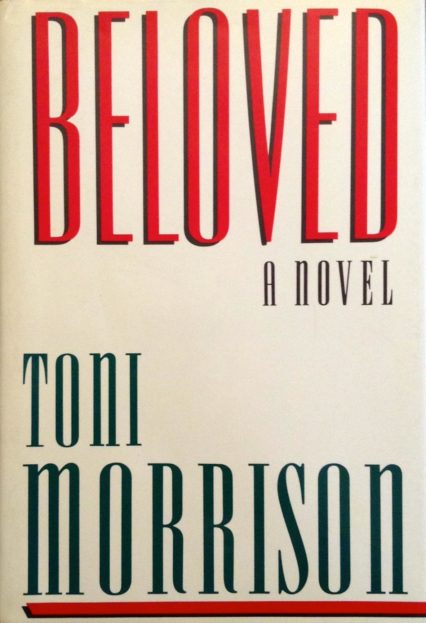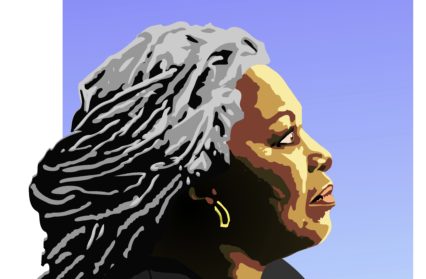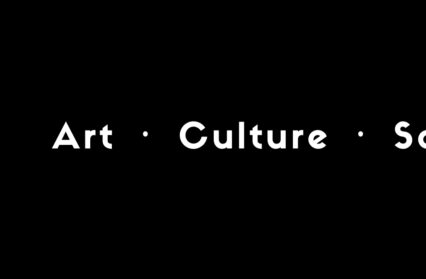Rachel Trezise writes about the towering influence of Toni Morrison on the development of her voice and how the Nobel laureate, who has died at the age of 88, helped her uncover the power of literature to tell the most personal of stories.
The header illustration of Toni Morrison is by Dean Lewis and was the cover image for the Winter 2010 edition of The Raconteur magazine in which a version of this article originally appeared.
As a ten-year-old living in the Rhondda valley, getting up at 4.a.m on weekends and sneaking out of our terraced house to go ghost-hunting with my Alsatian dog at the chapel at the bottom of the street, I understood that genius was something which came from somewhere else, and bypassed Wales completely. This had become apparent a few weeks earlier when Kylie Minogue announced a world tour that neglected to incorporate Cwmparc Community Hall, and it was a notion that would escort me through my guitar chord-soaked adolescence, where brilliance came from the liquor-store and nightclub-lined boulevards of West Hollywood, five thousand miles away, and then a little later, into my bookish adulthood, where literary talent came invariably from England and the United States, via the dormitories of Oxbridge and Ivy League Universities.
Of course Dylan Thomas came from Wales and set much, if not all, of his work there. But it was America that loomed large in the zeitgeist of my formative years, because it loomed large also in the lives and careers of each and every successful artist who had originated from Wales. The time that Dylan Thomas spent touring the States and his eventual death in New York in 1953 helped to cement his place in history as a globally renowned poet, and as a household name back in the land that he wanted his fathers to keep. But I never studied Dylan Thomas in comprehensive school, and I certainly never read him at home. (The only book in our house was a huge medical dictionary my mother used to classify the endless chronic symptoms she claimed to suffer on a daily basis – funny how she never stumbled onto the definitions for hypochondria or alcoholism). What we did study was Shakespeare plays, Charles Dickens’ A Christmas Carol, Thomas Hardy’s Tess of the d’Urbervilles, Truman Capote’s In Cold Blood; books and writers that came from other places, other times, perhaps most significantly – other classes.
If you are perceptive, you may have noticed that there are no women in the short list of writers above. That is not a coincidence. In south Wales in the 80s and early 90s, putting the words ‘female’ and ‘genius’ in the same sentence would have created an oxymoron. Thatcher’s influence was insidious; the Daily Mail touted her as a role model but to us she was simply malevolent. I do remember fleeting mentions of George Eliot, Jane Austen, and the Brontë sisters, but from the distance I squinted, I swiftly determined their work to be preoccupied with corsets and floating meringues, protracted descriptions of flora and the procuring of wealthy husbands. They were fairytales for posh people, and I never imagined that any of those women were rebellious, or even suspicious of Victorian convention. No; genius, whatever it was, came from far, far away, and it came in the form of man.
I discovered Toni Morrison in the autumn of ’96, three years after she won the Nobel Prize. Beloved was on my English A Level reading list, (an exam I would ultimately fail with an N grade). I remember buying the book and walking home with it through Abergorki Industrial Estate, the light of the sky fading, the amber streetlight reflecting on its paper cover. I remember reading the epigraph on the first page for the first time. Sixty Million and more, it said. Later I would learn that this was a reference to the number of people who died on the Middle Passage from Africa to America. But there and then, aged seventeen, on the tarmac crossing the River Taff, I had no idea what the book was going to be about.

I’ve heard Beloved described as ‘notoriously difficult,’ but I never thought it was. I was gripped from the first sentence. And what a sentence! 124 was spiteful. And then: Full of baby’s venom. It will transpire that the 124 in question is the Ohio house inhabited by Sethe and her daughter Denver, having escaped from slavery. The venom is the poltergeist that haunts it – Beloved; the other daughter whose throat Sethe slit when she was two years old, murdered by her mother in a desperate act designed to protect her from a life in slavery, and the sexual abuse and violence that came with it. Yes, one of the main characters in the novel is a ghost, and not the didactic Dickensian ghosts of Christmas past and present, but a fierce thing that left ‘kettleful[s] of chickpeas smoking in a heap on the floor.’ Nevertheless, I understood that this spectre was a plot device too; a manifestation of the character’s horrific experiences, things which are too ugly for conversation, and therefore go unspoken. The novel, as well as the house, pulsates with unnatural energy, and like Sethe’s sons, Howard and Buglar, running away from the house ‘as soon as merely looking in a mirror shattered it,’ or, ‘as soon as two tiny handprints appeared in the cake,’ I watched seventeen-year-old students leave the English class as soon as Morrison’s prose got vicious. I stayed. I liked what Baby Suggs, the grandmother character, said when Sethe suggested moving. ‘What’d be the point? Not a house in the country ain’t packed to its rafters with some dead Negro’s grief.’
Nobody in the Rhondda valley was black then. Nobody could properly understand what it was to be a slave, or to be descended from slavery. What I did identify with was the ubiquitous oppression in Morrison’s work; the misery, the violence, the sexual abuse, and the way the ghost’s appearance reawakened the character’s recollections of it. They were forced to open their repressed memories and deal with their pasts, which was what Morrison herself, was doing. Here was a woman giving a clear voice to an America that had for so long been ignored by the squeamish.
Fast forward nine years, and it’s 2005. I’m a published, full time writer and I’m working on my third book. One day I read an interview in the Guardian with a writer called Annie Proulx, someone who doesn’t care to give too many interviews. Unlike events leading to my discovery of Morrison, I don’t remember exactly what it was Proulx said to capture my undivided attention. I don’t remember any telling epigraphs. In fact I’m not sure which came first, Brokeback Mountain the film, with a handsome Heath Ledger and skinny Jake Gyllenhaal brooding on some mountain vista, or the last short story in a paperback collection called Close Range: Wyoming Stories. No matter, since the screenplay stayed painstakingly faithful to the original. But somehow I stumbled onto a writer whose career I would trail with an obsession reserved previously for Toni Morrison alone.
Proulx, a little like Morrison, focuses on a corner of America largely ignored by the mainstream. Her work, like the work of all good writers, reserves judgement, though it’s quite clear her sympathy lies with the little guys and their battles against the corporate machines. We’d use the term ‘working class,’ in Britain; men ‘with short, white face whiskers like the fur on a laboratory rat.’ The recurring themes in her work are incest, lust and sexual ambiguity. Of course, love between two cowboys was the subject of Brokeback Mountain. Of this she says: ‘I’m always annoyed that most American novels are very narrow in terms of their characters. There seem to be whole groups of people missing. There are a lot of gay people in this country and it seems to me absolutely natural and normal to write them into a novel. It makes some people very defensive and upset, but when Brokeback Mountain came out I got many, many letters from old cowboys in Wyoming who said, “You told my story.”’
And what she lacks in terms of the grand story she gains with an imaginative and delectable ear for language. The detail is always meticulous. The dialogue, despite her character’s famed stoicism, is always pitch perfect. My favourite story of hers is called A Lonely Coast. Unusually, it isn’t about men, it’s about women – women who are lonely, and as far from the stereotypy ‘Bridget Jones’ standard you could ever hope to get. This is them, pouring over the lonely hearts: ‘Listen, if it’s got four wheels or a dick you’re goin a have trouble with it, guaranteed.’ ‘What a you think ‘not God’s gift to women’ means?’ ‘Pecker the size of a peanut.’ When one of the women, Josanna takes up with Elk Nelson, ‘a bad old boy from his scuffed boots to his greasy ponytail… [with] … brown eyes the color of graham crackers …’ the narrator sums up the story thus:
When you are bone tired of being alone, when all you want is someone to pull you close and say it’s all right, and you get one like Elk Nelson you’ve got to see you’ve licked the bottom of the dish.
So here we have Morrison, a black academic living on the Eastern seaboard, and Proulx, a white woman who, until published in her mid-fifties, made a living writing copy for fishing magazines, and who now resides in what could be described as a contemporary wild west. What they share is an inimitable literary talent, and an empathy for the downtrodden. Their obituaries will tell us that they were women who took subject matters once considered ‘unpalatable’ or ‘quaint’ and proudly projected them into the minds and screens of the formerly unacquainted masses. Genius, it seems, comes from the abyss, from where mere mortals fear to look. And, contrary to popular belief, it comes with tits.
Great! Except, one question remains unanswered. Why do my favourite two authors come from the United States? Where are Britain’s answers to Morrison and Proulx? They don’t exist, and if they do, I haven’t read them yet, which means they aren’t getting published, or at the very least, they aren’t getting the marketing or the distribution they deserve. Sure, there are writers who ponder the hard to swallow; in popular fiction Irvine Welsh told us about the heroin swamped tenements of east Edinburgh. But Trianspotting, for me at least, seemed a bit too workaday, a bit too kitchen sink. Hubert Selby Jnr had junkies down in the 70s. And Welsh’s writing ability leaves a lot to be desired if we’re seriously considering holding him up next to Annie Proulx. Talent, in a way, is reliant on population counts. Genius is like lightning. Getting struck by it is rare, and when it happens it’s more likely to hit somebody in the States (population: 304,059,724) than somebody in the UK (population: 60,943,912). But surely there’s more to it than that? For all of our British snobbery about the America’s flossy ‘have-a-nice-day’ culture, and our quips about Hollywood being able to turn dirges into showstoppers (check out 20th Century Fox’s adaptation of Llewellyn’s How Green Was My Valley; the coalmine is at the top of a mountain and the terraces miraculously turn to Gone With the Wind style plantation houses when the interiors are filmed – as if the novel hadn’t done enough to soften life in Victorian south Wales) I think there is a fundamental difference in the collective attitude of old and new world creatives, in literature at least.
Our stiff upper lips, our queasiness at the mere mention of anything just a little off colour, prevents us from dredging through the areas of our culture, be it historical, or – more fittingly – contemporary, that could provide us with excellent subject matter for our literature. An example of this is the recent suicide cluster in Bridgend. When news of the seventh suicide hit the airwaves, the BBC, for whom I was writing a play at the time (which incidentally happened to be about suicide) rang and called me into the office. The producer I was working with told me in no uncertain terms to change the topic, and change it quick. Suicide was suddenly off the menu. A week later, a Canadian film crew were arriving on my doorstep, requesting a comment for their documentary on suicide clusters. So, as an American might say, go figure! Unfortunately, I think it’s going to be some time before us Brits are able sweep decorum aside in favour of some original creative genius. And who needs it anyway? We’ve got Dylan Thomas, and apparently that’s enough.
Rachel Trezise is a novelist, essayist and playwright. Her latest stage work, Cotton Fingers, for National Theatre Wales, is currently on at the Edinburgh Fringe.












